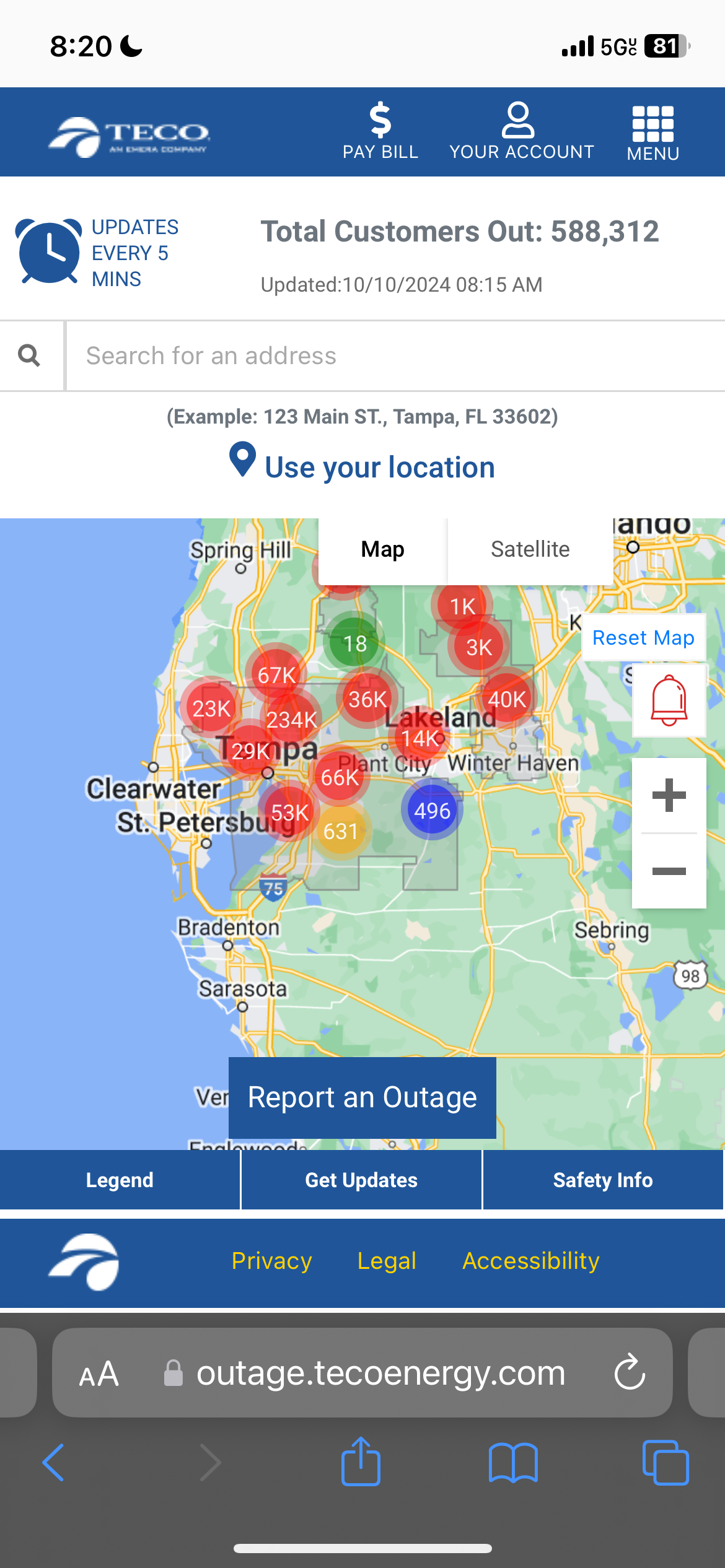When times get tough, marketing budgets are among the first ones cut. But such cutbacks can be shortsighted. On this edition of The McKinsey Podcast, McKinsey senior partner Kelsey Robinson chats with cohost and editorial director Roberta Fusaro about why chief marketing officers should instead be empowered to adopt an investor mindset—that is, focus on eliminating inefficient spending and reinvesting it in high-growth marketing activities. By taking a full-funnel approach to their marketing strategies, companies are more likely to weather any economic storm that may come their way.
Also, McKinsey senior partner Alok Kshirsagar talks about making a tough call on a high-profile project, from our Rookie Moment series.
This transcript has been edited for clarity and length.
The McKinsey Podcast is hosted by Roberta Fusaro and Lucia Rahilly.
From cost center to revenue driver
Roberta Fusaro: We’re talking about marketing and resilience. When times are tough and budgets are under review, it seems that marketing is always one of the first teams to get hit. Why is that?
Kelsey Robinson: You’re right. Marketing is always one of the first few items on the chopping block. When leaders and companies start to worry about demand, they often quickly think, “If there’s less demand to get, we’ll spend less to try to get it.” It’s a consistent behavior and phenomenon we see across companies.
Roberta Fusaro: But when marketing is free of those pressures and those perceptions, what can it do for a company?
Kelsey Robinson: When marketing is at its best, it is actually a growth driver. Chief marketing officers who realize that do two things: first, they take a growth mindset and set bolder aspirations for marketing. Second, they recast marketing as a revenue driver versus a cost center. They shift it to be a growth function, and that means that the CMO has to do things differently.
They usually have to apply a different level of rigor—a kind of chief financial officer or investor mindset to marketing. Regardless of what budget they have—high, low, or the same as last year—how do they make sure it’s working as hard as possible?
The highest-performing marketing organizations and marketers are also thinking about what the next-generation growth drivers are. So that might be new approaches like full-funnel marketing or new ways to earn and think about media dollars, like commerce media.
Roberta Fusaro: Can you share an example of a company that’s doubled down on marketing and how it has managed to beat out competitors?
Kelsey Robinson: You previously mentioned tougher economic times. Companies that double down during those times usually achieve above-market growth. What we’ve seen is that companies that do focus on growth—usually in marketing and other functions—grow 150 percentage points higher than their sector peers who don’t do that.
There was a travel company that made the decision not to play it safe. So in one of these moments of uncertainty, they did a few things. They doubled down on branding. They took a surgical look at what parts of their investments and marketing were underperforming. Keep in mind, this was during a time when the travel sector was going through a big slowdown and a lot of disruption. Instead, they forged ahead. They launched their biggest campaign in a decade, and consequentially, they far outperformed their peers and continue to do so.
Find the savings, and then reinvest it
Roberta Fusaro: How does an investor mindset apply to the world of the CMO?
Kelsey Robinson: I always like to think of it as the CMO thinking a little more like a CFO. That hasn’t always been true in the world of marketing. When you think of the era depicted in Mad Men decades ago, that CFO mindset was not what marketing was about. But I think the CFO mindset is about ruthlessly evaluating your spend across the portfolio. It’s about finding where the portfolio is high performing and deserves more allocation, and it’s also about finding where it’s underperforming and eliminating that inefficient spend. So that might be certain markets. It might be certain channels. It might be certain creative. But it’s really about taking a look at the whole enterprise and asking whether you are allocating your dollars in the most accretive and efficient way for this organization to keep it on a sustained and high-growth path.
We’ve seen that when you take that CFO rigor, you pretty quickly find a 10 to 20 percent savings—that’s in almost any company. We don’t have to necessarily even cut the budget: I could take that 10 to 20 percent and go invest it in new customer acquisition.
Roberta Fusaro: On that point about reallocating resources against presumably higher-value opportunities, what’s the thought process like for a CMO versus a CFO? Does it involve quick or deliberate decisions?
Kelsey Robinson: It’s all about data-driven decisions. An example of a decision might be we’ve been spending a lot on a campaign that feels right from a brand perspective, but maybe we haven’t actually seen it perform evenly across markets. I had a client in this situation who said, “We can maybe test it later and see how to make that work. But for now, let’s not waste that money, because at this moment it’s just not meeting the rest of our spend’s return profile.”
Taking a full-funnel approach
Roberta Fusaro: You and McKinsey have defined full-funnel marketing as an approach that combines two types of strategies: traditional brand building, like TV ads, and performance marketing, meaning data-driven measures of online activity. Why is full-funnel marketing so important?
Kelsey Robinson: I think what has happened over the last 15 to 20 years is marketing’s developed a bit of a split personality. You’ve got traditional brand building and then you have performance marketing—kind of everything that came out of search engine marketing. It’s so measurable. I know right now whether it actually motivated a sale or what else it did, and I can track that through.
What’s happened for a lot of companies though is that this split notion—between traditional brand building and performance marketing—is inhibiting how companies think. If you only think about immediate return on investment, you’re never going to build your brand. You’re never going to actually generate demand versus capture demand. Performance marketing is great about capturing demand that’s already close.
So this notion of full funnel is how do we actually think top to bottom and prove with data and rigor that everything from brand building to that last inch or last foot of demand capture matters.
Let me give you an example. You spend on a brand-building campaign in radio and TV. Then you compare that to spending on branded terms on search engine marketing for a specific product. With the latter I can show and prove the ROI it has on it.
Now the former, the TV and radio ad, might be great. I might be entering a new market. I might need to build my brand in a region or with a different set of consumers. It’s going to take me a little while to prove that that brand awareness and those brand equities are building up. It’s going to take a while to show that they’re going to translate to demand.
A lot of the work we’re doing in full-funnel marketing is figuring out how to create a measurement ecosystem that allows you to track some of the leading indicators of that upper funnel—the brand building. It’s about even being able to do things like match market testing to show the difference in results over two months between spending in one city versus not spending in another city. It’s a way to prove that that spend truly does matter to the company, but you just can’t measure it as immediately as you might want to. I think enlightened CMOs and CFOs who understand this have the patience and understand they need both in the mix. If you only rotate toward performance marketing, you’re going to wake up with a brand that hasn’t been nurtured.
Roberta Fusaro: I imagine it would be easier if you’re taking a full-funnel approach because you’re seeing everything. You’re intentionally taking the holistic view. But it also sounds like that might be kind of difficult, too.
Kelsey Robinson: Yes, it’s easier once you’re there. That takes showing the organization the value of mid and upper funnel through a series of tests and indicators over time. That’s not easy. There’s no silver bullet tool.
Many companies had media mix models, for example, which are great. That’s one tool. But they don’t answer everything about this mid and upper funnel. The challenge to doing full-funnel marketing well is that you have to have an integrated measurement system that has geo-based tests, incrementality, and media mix models. That’s hard. It takes patience to run those tests, explain the results to the other executives, and then come up with a plan based on them. Even afterwards, every so often, you have to retest to make sure that’s still the case. So I think you’re right. In concept, it’s easier. But in practice, it’s actually harder.
Commerce media—your ecosystem, your customers
Roberta Fusaro: Interesting. I want to go back to this notion of commerce media. According to an article we just published, commerce media is expected to deliver more than $100 billion in revenue to US companies by the end of 2026. How does commerce media work?
Kelsey Robinson: Commerce media is effectively a paradigm shift in digital advertising in terms of how the ad is bought and how it’s optimized. Amazon has had a kind of commerce media network for a while. They have taken the scale of their site visitors and the intentional shoppers and provided a capability for a third-party seller or first-party brand to advertise to get its product more front and center in front of the shopper.
So instead of purchasing a search ad or a social ad and directing someone to the seller’s site, the shopper is already in Amazon’s commerce media ecosystem. The commerce media system actually knows a lot about these consumers. So the system can talk to vacuum brand XYZ and tell them, “I know a lot about this shopper and what they’re looking for, and I can help you put your product in front of the most prime shopper.”
So it’s a shift in terms of where the ad is happening and the data its using. But effectively, what it does is it helps connect ad spend more directly to the purchaser and improves ad targeting. It also helps give better audience insights to the brands.
Roberta Fusaro: Are there specific challenges associated with implementing commerce media? A large organization like Amazon is sort of one application, one use case, one story.
Kelsey Robinson: It requires a business case and then a build. If you were a cross-product retailer and you had lots of different products and sold products to many different types of shoppers, there’s definitely a potential for commerce media for you.
We’ve seen that more and more retailers are starting to offer commerce media networks. A company would consider what it can offer to its suppliers and its shoppers, what the value of that is, and then what it would need to build to make it a reality. It includes upfront engineering work to actually put the ads in the right places through the shopping experience. And then it requires data connectivity and real thinking about data privacy, too. What data can I use and when do I actually make those ads more targeted?
Roberta Fusaro: Right. It’s definitely something that we should be looking out for. Let me take us back to our discussion of CMO budgets being cut during times of uncertainty. If I’m a CMO who needs to make the case against cuts to my budget, what can I say to senior leaders to signal that marketing is actually a critical part of the recovery and long-term resilience for the organization?
Kelsey Robinson: There are three things I would do, and they are all linked to the investor mindset. The first thing is I would bring in some of the external data around consumers. It may be uncertain times, but consumers are still spending in pockets. We can’t miss out on some of the demand that’s there and still growing. I’d point to some of those external indicators.
The second thing I’d do is I would bring data to clearly show what are the parts of marketing that are really driving value for the business today. A way to do that is to take some channels that are specific examples where it is almost undeniable that the data shows the true return that it’s driving for the business. These examples could be a store opening or a type of campaign.
The third thing I’d do would be to ask for a plan forward together. I would probably talk about this notion of fund and fuel. That would be doing a rigorous detailed assessment of where our spend is going and where there are pockets of opportunity. Following that, we’d come back with a number where we feel like the dollars are not being spent as well as they could be. Then we’d discuss what would be the best place for those dollars. Should that be a drop to the bottom line for the company? Or is there a way for me to actually reinvest those dollars in some of the high-performing channels I showed you, like into customer acquisition? I’d try to create a spirit of partnership there, because sometimes the ask for finding those dollars is still going to come. The question is how can we also think about the best use of those dollars for the corporation.
Roberta Fusaro: This is such solid guidance, Kelsey. Thank you so much.
Purpose before profit
Lucia Rahilly: Putting dollars to good use was on McKinsey senior partner Alok Kshirsagar’s mind when he noticed a project was all talk and little action.
Alok Kshirsagar: After a couple of great years in New York, I was transferred to London and was now ready to lead a team. And we were working on a very exciting tech start-up with lots of different people involved across Europe.
I was fully into leading this team, and we were doing some fantastic work. There were lots of initial great reviews and momentum. But then we sat back and realized about six or eight weeks had passed and there were great presentations, but where was the output?
We sat down in a team meeting and said, “We can’t just be producing PowerPoint. There needs to be something that happens from all of this.” And we then realized that actually all of these people who had come together were not pulling with a common purpose. They had no particular goal. They were just talking to each other through McKinsey.
And even though this was my first time leading in a new market, I remember going and talking to my senior partner at the time and saying to him, “I’m very concerned that this is going to be a project with lots of activity but no impact.” And you know what he did? It still inspires me to this day. He called the CEO and said, “I’m actually going to stop this team because I don’t think you’re going to have impact. And I’m not here to put a team on the ground if you’re not going to have results from it.”
The CEO was shocked. This was a very high-profile tech venture at the time—front-page news when it was announced.
I’m still deeply grateful to that senior partner because he stood up for what was right. He was willing to walk away from what was a very high-profile engagement because the conditions for impact were not in place, which is a lesson that’s really carried me even to this day. I always ask myself, my clients, and my team, “Are we ensuring the conditions for impact are in place? Are people aligned? Are they willing to act? Are they motivated to act? Are they going to pull together or pull apart?” And for me, that’s been the greatest lesson I learned as a first-time team leader: that you, as a team leader, have the right to ask that question, and your colleagues will take that forward to ensure we’re set up properly.




